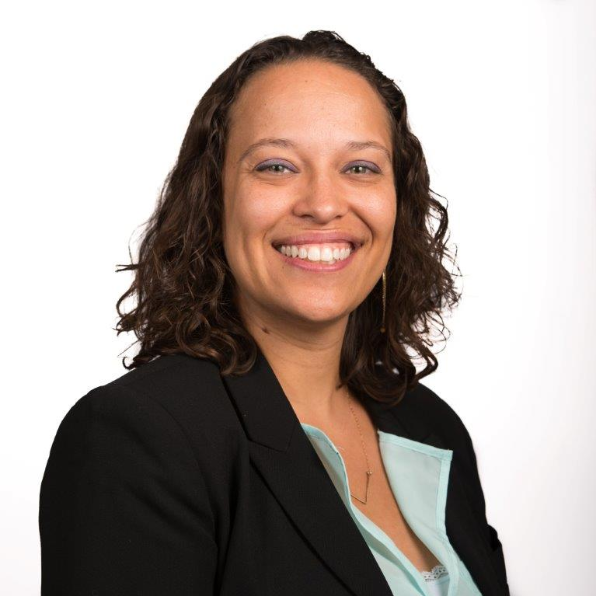In 1964 Sidney Poitier made history, becoming the first Black actor to win the Oscar for Best Actor for his performance in "Lilies of the Field."
In the years after winning the award, Poitier, who died in January at the age of 94, spoke openly about the racism he enountered, saying, "(Black people) were so new in Hollywood. There was almost no frame of reference for us except as stereotypical, one-dimensional characters."
Clearly, times have changed. Recent studies show that Black actors comprise 12.9% of leading roles in cable-scripted shows (proportionately reflecting the overall Black population of 13.4%). The numbers behind the scenes aren't as encouraging, though. Only 6% of the writers, directors and producers of U.S.-produced films are Black.
ASU News spoke to Aviva Dove-Viebahn, an assistant professor in the film and media studies program in the College of Liberal Arts and Sciences, about those numbers and how, as Black History Month is celebrated, people of color are being reflected in film and TV shows.
Question: Where does the film and TV industry stand in terms of Black representation?
Answer: I think things are getting better. This is something we’re seeing really in the last couple of years. At least in terms of representation on screen, we’re seeing a lot more networks and production companies and studios really thinking about actually wanting to have not just more diversity but meaningful diversity. Time is going to tell whether this is actually change that is going to hold fast or whether it’s change just because there’s been recognition in Hollywood over the last few years that it’s doing poorly and now it’s scrambling to try to make sure it doesn’t look so bad anymore. This is the question I have: In 10 years, are we going to have meaningful diversity and inclusion, or is it going to backslide again once the focus has shifted away from the film industry?
Q: You mentioned “meaningful diversity.” As opposed to, say, filling a quota?
A: Maybe my students are getting tired of it, but I feel like I’m always hammering home that tokenism is not diversity. So, you can’t just be like, “Oh, look, the main character’s best friend is Black.” You just can’t do that over and over and over again but say, “Hey, we’re paying attention to diversity.” By meaningful diversity, you have to have not just always one character of color. There needs to be, I think, not just Black characters, but characters from other racial and ethnic groups as well, and it needs to not feel like, “Oh, yeah, we knew we couldn’t get away with having an all-white cast, so we threw in someone’s husband who just happens to be Black or Latino so no one could accuse us of having an all-white cast.”
You have to be thoughtful about the sort of representation by the people of color in your film or TV show. That doesn’t mean the plots always have to revolve around race. It means that those characters can’t feel like they’ve just been thrown in without any thought as to why you wanted a character who is (for example) from an Indigenous background in this role.
Q: Do you believe Hollywood is slowly coming to the realization there’s an audience that wants to identify with the characters it sees?
A: I think this really depends on the studio and how much it’s dedicated to this and how much it cares. I do think that filmmakers, production studios and networks are starting to think more about this and realizing their audiences and viewers are coming from many different backgrounds, and it’s not interesting for anyone, including white viewers, to sit and only watch a certain group of people. I also think it’s happening because production companies are starting to realize they can’t just have an all-white crew or an all-white writers’ room, and having more people of color behind the scenes is going to change what we see in front of the camera.
Q: Do you think there’s been a longstanding perception among media company executives that white audiences won’t watch “Black” stories.
A: I think from the conversation I’ve had with filmmakers, that’s what they’ve been told. Like, "This story is too diverse, people don’t want to see this. Can’t you make this story more white so more people will care?" One of the things we really need to get away from is that white stories are universal stories and stories about people of color or stories that frame the lives of people of color, that only people from those marginalized communities will care. Viewers of color have been watching these stories about white characters for decades and are perfectly capable of enjoying those films. There’s no reason why it shouldn’t go both ways.
Q: The hope eventually is that only the story matters, right?
A: People have to be careful about thinking that way, because that’s the way you fall back into just having these sort of all-white casts. We want stories that are actually reflective of what the United States and the world look like, and they’re not right now.
Q: It’s an obvious question, but why is that representation in film and TV so important?
A: It is an obvious question, but it’s one of the most important ones. There’s a couple of reasons. One, as I was saying before, the more you show the experiences of people of color — I should add women and other marginalized groups in terms of sexuality, or even class and disability — the more normalized they become and the more you’re going to see those stories. So, it creates a snowball effect. It won’t feel so other-ized every time there’s a sitcom about a Black family, for example. Two, it’s also about being able to see yourself on a screen. I think most viewers are happy to watch stories that are not immediately reflective of their lives. Most of the things I watch on television don’t have characters who are exactly like me. But at the same time, it’s really good for us emotionally and mentally to be able to identify with characters. There has to be some sort of representation of people from different racial groups so people can see themselves in the characters and not always feel like they have to transposition this in their head, imagining that they could be in this role.
Q: According to a 2001 McKinsey study, 87% of TV executives and 92% of film executives are white? Isn’t that the real breakthrough that needs to occur for changes down the line?
A: Absolutely. When more people in those positions are Black or part of other marginalized communities, then you’re more likely to have more below that line in the film who are going to be representative of those groups, because they’re more aware of these kinds of issues. What we’re seeing is networks and production studios paying a lot more attention, which is good, to front-facing representation. The behind-the-scenes representation has always lagged behind.
One of the problems, as I’ve understood it from talking to people in the industry, is that often one or two well-known directors or show creators get sort of trapped into, “These are the people who are going to be the Black show runners.” It’s a sort of tokenism. They become the people who get all the new shows or all the new films, and that leaves a lot of other wonderful creators kind of in the dust. I think in some cases it’s a literal quota system, but in other cases it’s almost an unspoken quota system. Until we can break away from that, it’s going to be difficult.
Q: Are you optimistic or pessimistic about how this will develop over the next 10 years?
A: I’m optimistic that things are changing for the better, but I think we need to remain vigilant. My optimism extends to the point that I’m looking forward to seeing what is going to happen over the next five to 10 years. I think it’s going in the right direction, but I don’t think we can be like, “Well, things are better now.” So, we have to keep paying attention and really stay on track in terms of monitoring what’s going on with the film and television industries.
Top photo courtesy of iStock/Getty Images
More Arts, humanities and education

Behind the curtain: Discovering careers in the arts at ASU Gammage
For a group of students from Sunnyslope High School, Eastmark High School and AZ Teen Homeschool Co-op, a recent December day at ASU Gammage became much more than just a field trip. It became an eye-…

Honoring a legacy of cultural education, exploration
Belle Edson has inspired countless students to expand their horizons during her 26-year tenure at Arizona State University. A beloved professor and director of undergraduate studies and core courses…

School of Social Work’s ‘keepin’ it REAL’ substance use prevention program to expand across Sonora this spring
More than 7,000 seventh graders in the Mexican state of Sonora will enroll this spring in an Arizona State University program that has been teaching how to prevent substance use to thousands of…

